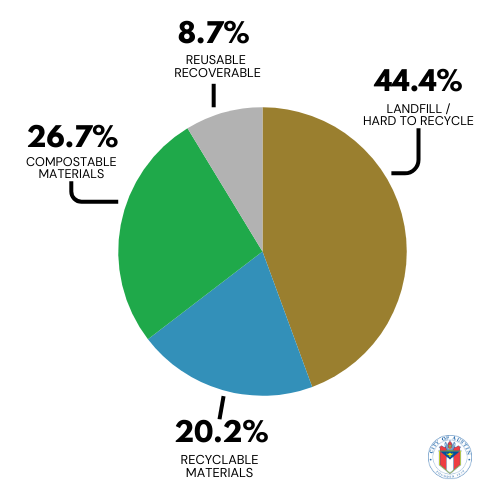
Austin Zero Waste Studies
To achieve Austin’s Zero Waste Goal by 2040, the community needs to divert more than 90% of discards from being burned or buried.
In order to measure Austin’s progress towards its zero waste goal, Austin Resource Recovery regularly works with consultants to conduct comprehensive studies of recycling, composting, reduction, donation and other diversion activities at both residences and commercial businesses in the region. The first Community Diversion Study was published in 2015.
In 2022, Austin Resource Recovery completed the 2020 Community Diversion Study.

